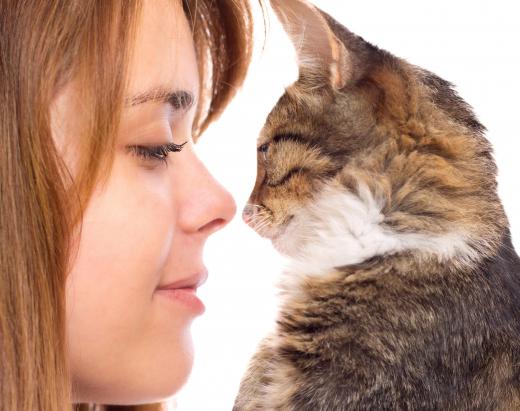What is Biophilia?
 Tricia Christensen
Tricia Christensen
Biophilia can be translated as a love or desire for living things. Erich Fromm used the term in the mid 20th century to describe this human desire. However, it really came into popular use with the publication of the 1993 book The Biophilia Hypothesis, which was co-written by Edward O. Wilson and Stephen Kellert.
According to Wilson, and others who endorse this hypothesis, we don’t just love the natural world because it looks nice or is emotionally stirring. Instead, we love it because we are genetically encoded to do so, and a care for “nature” is key to survival. Part of this theory examines why humans are so attracted not just to human babies but also to other baby mammals. From an evolutionary standpoint, killing the young of other mammals would be detrimental to its whole population and in part, human survival. So with a few exceptions, we’ve ascribed cuteness and affection to baby animals so we don’t eat them and endanger our own survival.

Some humans seem to be more affected by biophilia than others. A sheep farmer, for instance may not ooh and aah over baby lambs but may see them as a product instead. Other people may suffer from biophobia and be distinctly uncomfortable in natural settings, hating every bug or animal that might appear and not even like grass or trees. Some people, conversely, seem to thrive when they’re in outdoor settings or in indoor settings that exhibit lots of nature. An indoor waterfall in a building, or offices with large windows and lots of plants may appeal to our innate biophilia, and make us more comfortable.

This yearning to relate to other natural elements in the world may in part explain why we care for animals, and why some people devote their lives to animal rescue. If something in our evolution has made us particularly susceptible to biophilia, we may only thrive in work or hobbies that help us stay connected at all times to some non-human natural element of the world. Certainly, some animals may have evolved biophilia too, especially toward humans. We may find dogs and cats especially charming since they interact with us more than do most other animals.

There are some who question the biophilia hypothesis. For instance, it doesn’t completely explain why humans evolved to care for things that weren’t part of their DNA structure and didn’t necessarily have anything to do with survival. Richard Dawkins proposes that caring for other animals or the environment may have evolved not so much because we need to feel connected to nature, but because such caring changes the perception of others. It makes others feel that we are superior humans, and we thus have a one-up in terms of attracting mates and have more power in society.
There are also some who feel that biophilia is taken to an extreme. Some criticize vegans for instance, for not ever participating in the death of animals, to the point where they won’t eat honey because it may kill bees, or eat eggs even when they are unfertilized. Vegans counter that animals were not put on the earth to be exploited. Without saying what view is right or wrong here, it should be stated that use of animals has existed for about 10,000 years.
An interesting offshoot of the biophilia hypothesis is its incorporation into modern architecture. Some buildings are now specifically planned with “natural” and “organic” elements in the hopes that people who have to work in them will feel more at ease and be more productive. This provides a great difference from the typical “cubical” style office of the past, and some companies even allow people to bring their pets to work. The California based company AutoDesk, has been known for its liberal work practices in this respect.
AS FEATURED ON:
AS FEATURED ON:













Discussion Comments
@Nefertini and @ Ceptorbi, I believe that biophilia exists. However, I don't agree with sociobiologists that the underlying genetic reason for behavior or love of nature and living things is for survival of the species. I also feel that environment and genetics affect human behavior. Violence, for example, can be the effect of growing up in a violent home. In some cases, though, it may be the result of "miswired" genes or a combination of both nature and nurture. Such behavior can also be influenced by drugs or alcohol, so in my opinion human behavior is more complicated than sociobiology presents it as.
@ Ceptorbi, Dr. E. O. Wilson also popularized the term sociobiology which is the study of the biological influence on social behavior. According to sociobiology theories, genetics rather than environment influence a lot of animal and human social behavior. This makes it a controversial subject since scientists disagree about the causes of human behavior.
There's an E. O. Wilson Biophilia Center in Walton County, Florida. Students and teachers in Walton County take field trips there to learn about the environment, biodiversity, and conservation. Founded in 2009, the center is named after Dr. Edward O. Wilson and features exhibits plus trails for the students and other visitors to explore.
Post your comments